The kinesio taping technique was invented in 1973 by a Japanese residing in America, Dr. Kenzo Kase and was successfully applied for the first time at the Seoul Olympics in 1988. Having established itself as an effective and extremely convenient means of kinesiotherapy, it began to be widely introduced at various competitions and Olympiads, as well as in medicine. By 2000, the technique began to be applied in Russia.
Content
- 1 Selection method
- 1.1 What is Kinesio Taping?
- 1.2 Benefits of Kinesio Taping
- 1.3 The mechanism of action of tapes
- 1.4 How to choose kinesio tape
- 1.5 Main characteristics of kinesio tapes
- 1.6 Market supply and main manufacturers
- 1.7 Which kinesio tape is better to choose
- 1.8 How to use kinesio tape correctly
- 1.9 When the use of kinesio tape is prohibited
- 1.10 Bandage care and application
- 1.11 Taping errors
- 1.12 conclusions
- 2 The best kinesio tapes for 2020 in Russia
Selection method
What is Kinesio Taping?
Kinesio taping is a therapeutic (curative) process that involves applying a special elastic patch (kinesio tape) to the injured body parts.
As a rule, kinesio tape has a special thermoactive acrylic coating, similar to human skin in its elasticity. It is this elasticity that facilitates muscle work, improves sanogenetic processes, while not restricting movement.
Hypoallergenicity is also one of the main requirements for what the kinesio tape is made of.
Benefits of kinesio taping
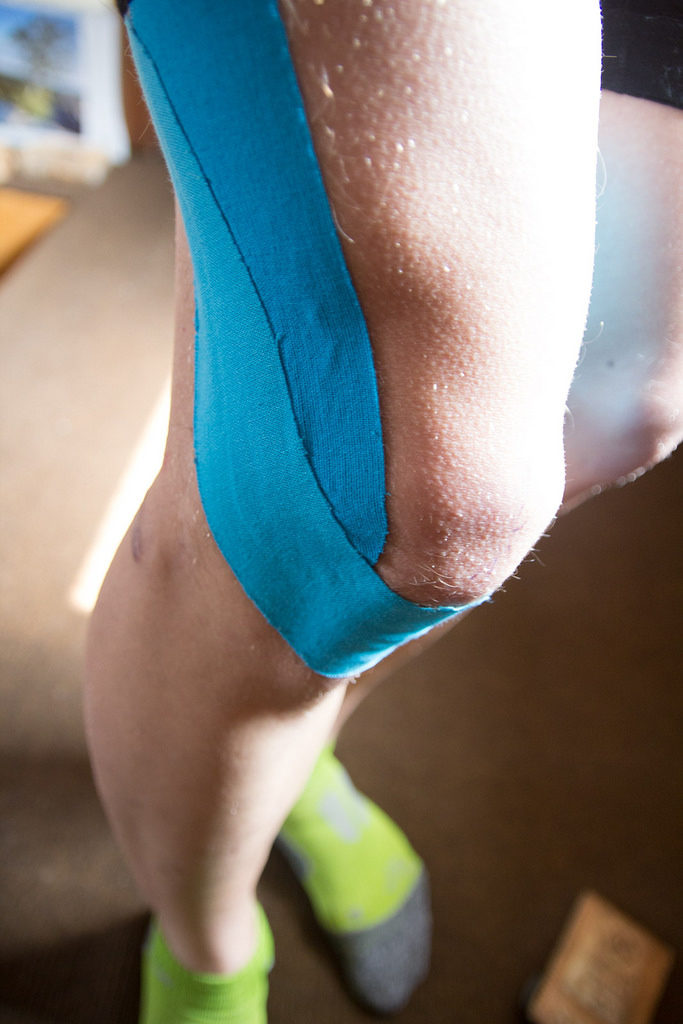
The absence of restriction in mobility is the main advantage of kinesiotherapy. The water and moisture permeability of the materials from which the kinesio bandages are made, improve the circulation of lymph and blood, endow the ribbons with the ability to wear for 5 days, while providing a hypoallergenic effect.
The indications for the use of kinesio taping are very wide, are they not only diseases of the musculoskeletal system, but also problems of a neuralgic and microcirculatory nature, with arthrosis of the joints and spine? with back pain. Also, kinesio tapes are successfully used for correcting diastasis, and other types of muscle divergence.
The mechanism of action of tapes
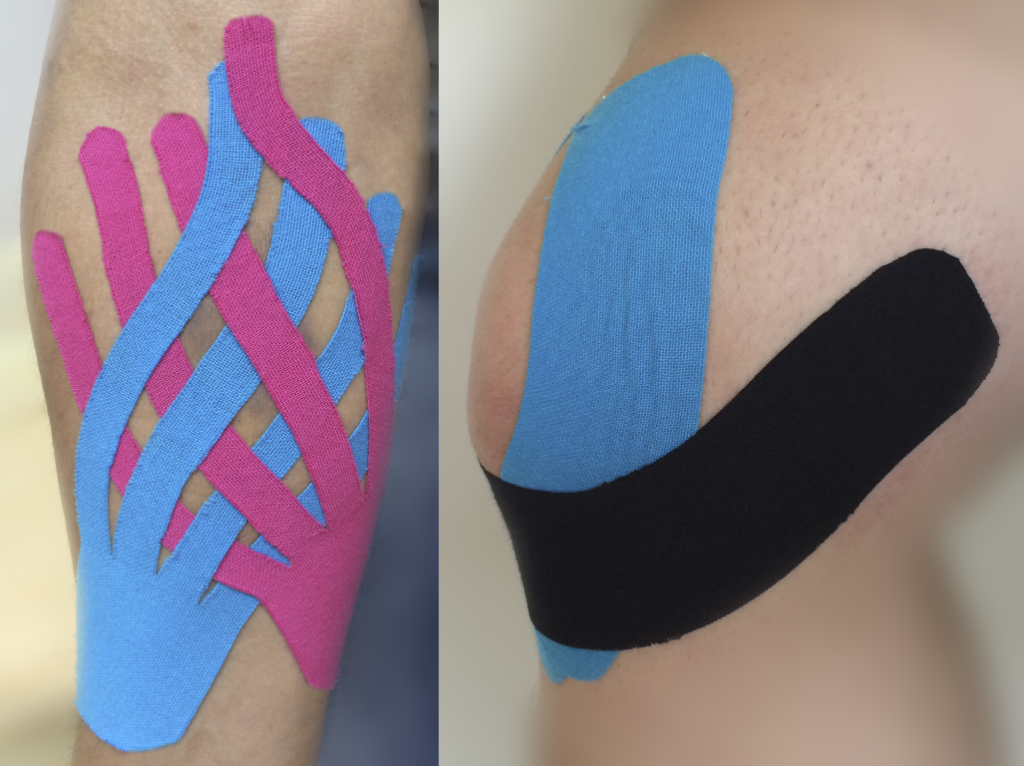
The impact of teips on the human body is quite versatile, however, the main directions of influence are aimed at achieving the following goals:
- Regulation of visceral disorders occurs through exposure to the organs of the associated muscles;
- Acceleration of healing processes and reduction of hematomas is achieved by increasing microcirculation in the area of application of the tape;
- Increase in interstitial space due to the tension of the kinesio tapes
- Reduction of lymphostasis and edema, improvement of the course of sanogenetic processes, through the compression effect of the kinesio bandage;
- Anesthetic effect on pain;
- Improvement of muscle tone due to the effect of tape on proprio and interoceptors;
- Stabilization and improvement of the functions of joints through the effects of teips on the ligaments and muscles;
- Creation of a pattern of movement, which becomes possible as the ribbons are superimposed in vector.
How to choose kinesio tape
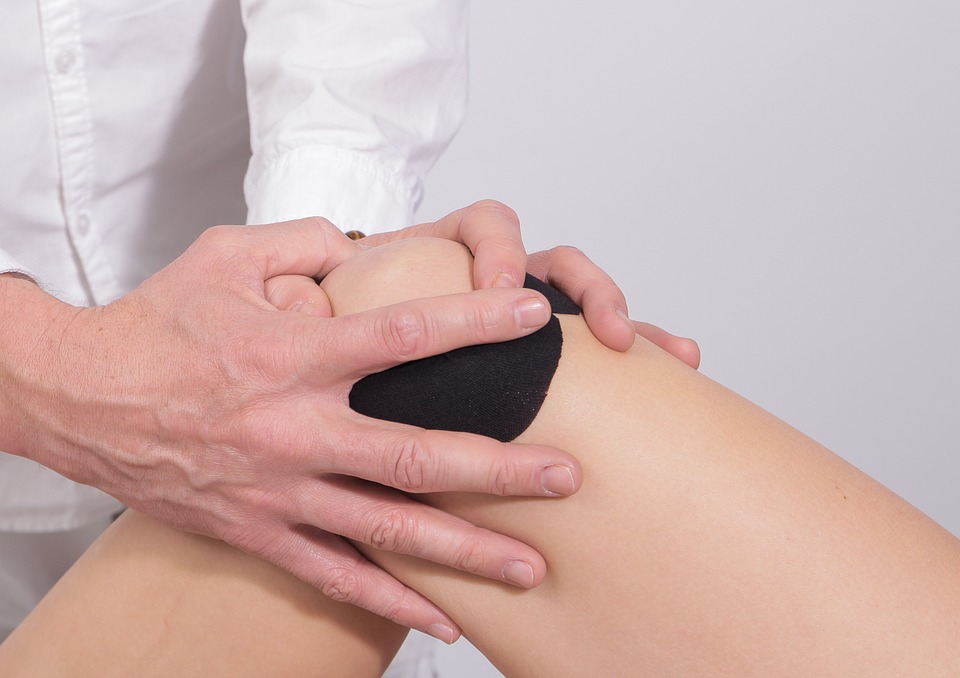
In order to choose the kinesio tape (tape) that suits you, you need to take into account several very important features of the product of this category.
First of all, you should pay attention to the material from which the tape is made. Basically, most kinesio tapes are made from the following material:
- cotton;
- viscose;
- nylon;
- mixed fibers.
Kinesio tapes made of natural cotton have long been used in professional sports. A feature of this material is:
- Inelasticity - allows for more rigid fixation and support of the required areas and joints;
- Elasticity - for a long time retains the applied tape without deformation even in conditions of increased mobility;
- Hygroscopicity - allows maintaining moisture in the tape itself at a comfortable level for human skin.
The cost of such tapes is quite high, but the efficiency is also maximum.
Viscose - natural material. It is produced during the processing of wood pulp and has many positive characteristics, characteristic only of natural materials.
This material does not cause allergies and is “breathable”, however, in comparison with cotton it is inferior to the latter, as it is prone to increased creasing and absorbs moisture well. The increased humidity of the tape leads to the loss of its main advantages, the bandage becomes softer, more viscous and no longer has its supportive effect on the joints, and sometimes it simply breaks.
Viscose-based tapes have not found application in sports, however, due to their low cost, they are successfully used by lovers of an active lifestyle.
Kinesio blended fiber tapes - the cheapest and simplest type. They have increased rigidity and an insufficient level of hygroscopicity, which, when used, can lead to discomfort and irritation.
In most cases, blended fiber tapes are used to fix additional equipment, or to create bandages with increased rigidity.
Main characteristics of kinesio tapes
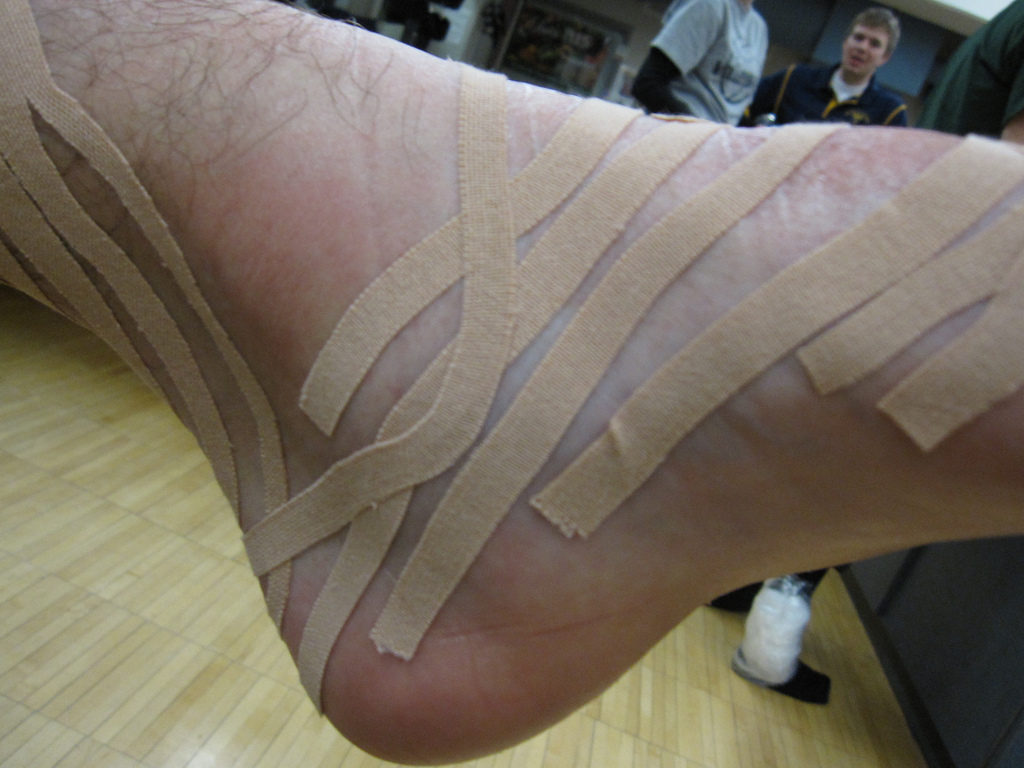
The main quality of any kinesiotape is flexibility in the longitudinal direction, thanks to this property, dressings applied at different angles and in places of bends remain without creases and folds.
Tapes with increased density are difficult and impractical to use as a bandage and for other complex types of taping, but such bandages will be effective for the formation of additional rigidity.
The main characteristics of kinesio tapes are also their length. Tapes are produced in rolls of 9.1 m., 10 m., 11.4 m., 13.7 m.
Professionals choose tapes of the maximum length, because with the smallest number of rolls, reliable fixation and anesthesia are provided. It is also more economical to use the longest belts. When purchasing kinesio tapes in packs, savings can reach 17%, therefore, for the needs of professional athletes, as a rule, the longest tapes are bought in packs, and in retail the greatest demand was found for shorter lengths.
The total length of a tape from one package with rolls of 11.4 m tape reaches 438.4 m, rolls with a tape of 9.1 m in length in a package will be only 202.2 m in length, with a slight variation in prices, the benefits become obvious.
With elastic kinesio tapes, the situation is about the same, they are produced in lengths of 2.7m., 4.5m., 6.9m. For the most profitable acquisition of the tape, it will be correct to divide the price of one product by its footage, compare the price per 1 meter for several tapes and choose the cheapest analogue.
An important indicator when purchasing a kinesio tape will be the date of its manufacture. The adhesive that is part of the tape has properties that change over time, especially if the storage of the goods was organized under improper conditions. It is better to refuse to buy bandages 2-3 years ago and make a purchase from a reliable supplier that has proven itself in the market.
Market supply and main manufacturers
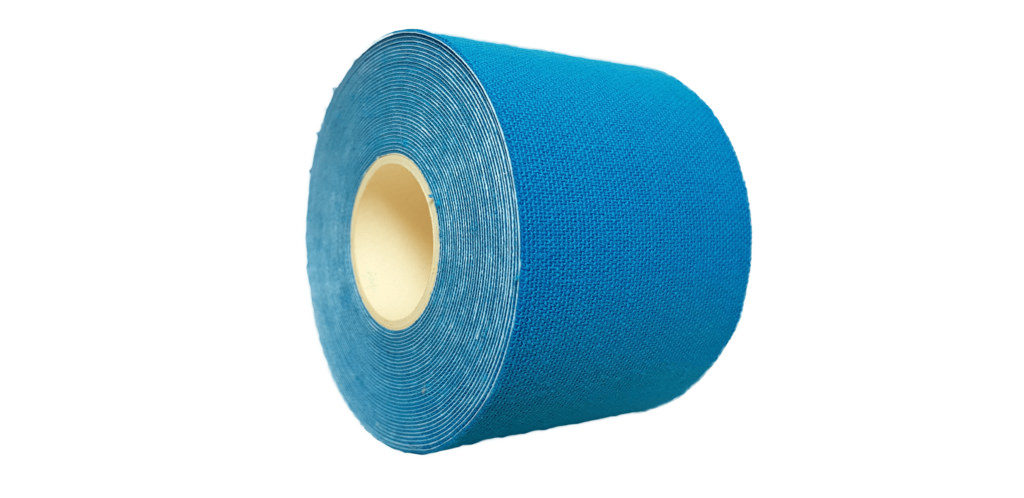
The market offer in 2020 involves a wide range of kinesiology tapes with different characteristics, all of them can be roughly divided into the following categories:
- Classic;
- Hard;
- Cohesive;
- Elastic;
- Adhesive.
An important point when choosing a kinesio tape in 2020 is the choice of a high-quality, well-established manufacturer.
There are many manufacturers of tapes on the market today, however, not all of them adhere to adherence to standards of stickiness, ductility and hypoallergenicity.
The main countries-brands of kinesio tapes are: Germany, the Netherlands (Europe), USA (America), Korea, Japan and China (Asia). At the same time, most of the products sold under European and American brands are in fact manufactured in Asia, or more precisely, in China. The quality of such products is known for their heterogeneity, it can be an excellent product, but most often kinesiotapes of Chinese origin have an unstable adhesive coating, do not work well in tension and can cause allergic reactions.
The situation with the recognized market leaders is completely different - Korean and Japanese firms are the best manufacturers of tapes in the world. A careful approach to the selection of materials and the strictest quality control guarantee the maximum therapeutic effect of these products.
The rating of quality brands for 2020 includes the following manufacturers:
- BBTape (Korea) - market leader;
- Phiten (Japan);
- EPOS (Korea);
- Benefact (Japan);
- Pharmacels (Korea);
- Kintex (Germany);
- FysioTape (Netherlands);
- RockTape (USA / Korea).
Inexpensive budget products include:
- Mueller (USA / China);
- FervorFOX (China);
- DL (China).
Which kinesio tape is better to choose
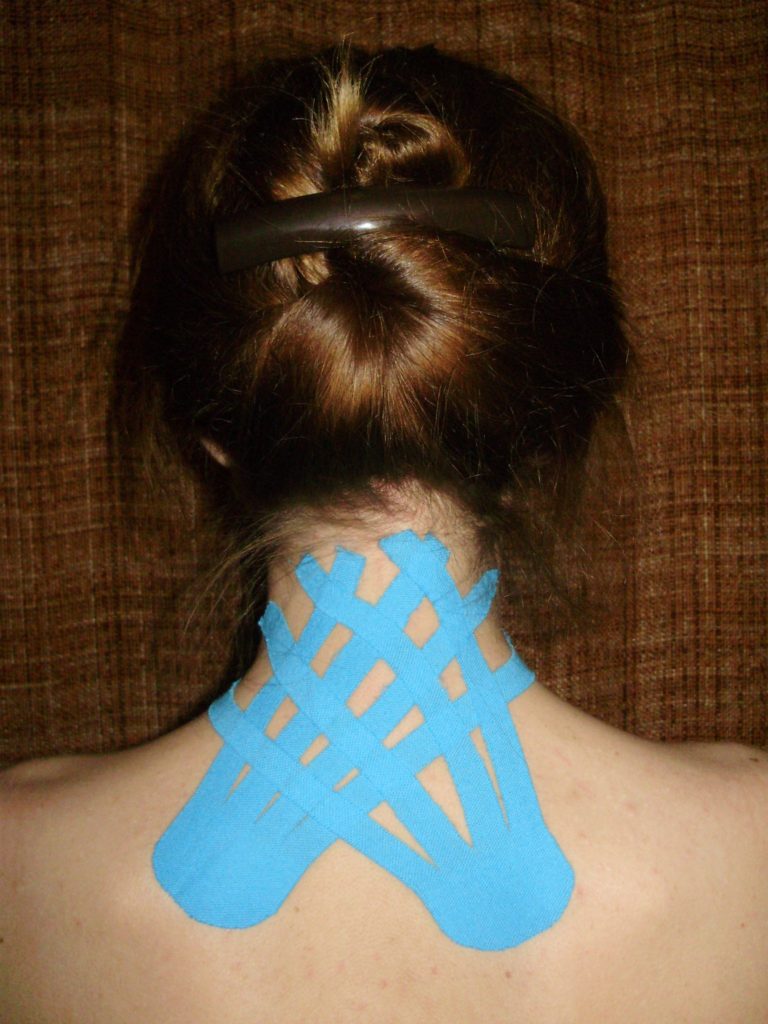
The question of which company is better than kinesio tapes is not the most correct one today. After all, each manufacturer is now ready to present a wide range of colors of bandages from just white to turquoise and purple shades to the eyes of the buyer. Leading manufacturers have several different lines (varieties) of tapes, which are used depending on the nature of the damage that occurs, and, accordingly, one manufacturer may be a leader in one line, and a completely different one in the next.
How to choose the right kinesio tape is a fairly common question. One simple answer can be given to beginners - go and consult a specialist.
Since one of the important conditions in the use of kinesiology tape is the implementation of the procedure by a professional (instructor, doctor, trainer and others who have experience in face taping), regardless of whether you buy the kinesio tape yourself, or on the advice of a specialist, it is all the same to achieve the effectiveness of the procedure, a professional will stick the bandage, and, therefore, it is easiest to trust his experienced opinion at the first stage.
It is the specialist who will be able to guide you on the price of the product, tell you about the popular models and what they are for, outline the advantages and disadvantages of each product, ultimately show which products are better to buy, give advice and recommendations for use, and show you how to stick the kinesio bandage yourself.
If you nevertheless decide to make a purchase on your own, then first you need to determine the criteria for choosing the kinesiotape that suits you. These can be characteristics such as average price, popularity of models and functionality.
It will be difficult to find an unequivocal answer to the question of how much a kinesio tape costs, it all depends on many factors: materials of manufacture, purpose, length and width. However, here are the average prices for 2020 for products from different manufacturers and categories:
- BBTape (350 - 1500 rubles);
- EPOS (300 - 3900 rubles);
- RockTape (141 - 4900 rubles);
- FervorFOX (50 - 250 rubles).
Consider, for example, a portion of the Pharmacels LLC product range.
The classic line "MASTERS ™ Tape Pharmacels®" is a bandage of various lengths and widths from a cotton base with an adhesive on one side. It is applicable for the treatment and prevention of many diseases. The line includes plasters of basic white color and colored tapes, their use is convenient if it is necessary to observe the general color scheme of an athlete's tracksuit.Also in the classic line there is a subspecies of bandages with a porous structure, such bandages are called "MASTERS ™ PRO Tape".
The EUROLINE Tape range produces tapes from a blend of cotton and polyester. Such bandages are characterized by increased strength, with the help of them rigid bandages are made for rugby and football players.
The line of elastic bandages is represented by the names "PRO-LASTIC tape", "STADIUS ™" and "TEAR-LASTIC ™ tape", these tapes are breathable and are made of a material resembling corrugated paper. Such a patch can be easily torn off with your hands, it is very pleasant to the body, it is used mainly for spitting.
The most durable products from all the lines of the manufacturer are considered to be the STRETCH tape and ACTIFORCE tape, they are made of pure cotton and are difficult to tear. You can work with such bandages only with scissors.
The special weaving of the tapes provides them with excellent plasticity with increased strength, the main purpose of these tapes is to create a reliable fixation in the ankle, wrist joint of the palm and knee.
"CO-STICK® tape" is a cohesin elastic tape, the peculiarity of its use is stickiness only on its own surface, it is convenient when there is no need to touch the skin surface with an adhesive element.
How to use kinesio tape correctly
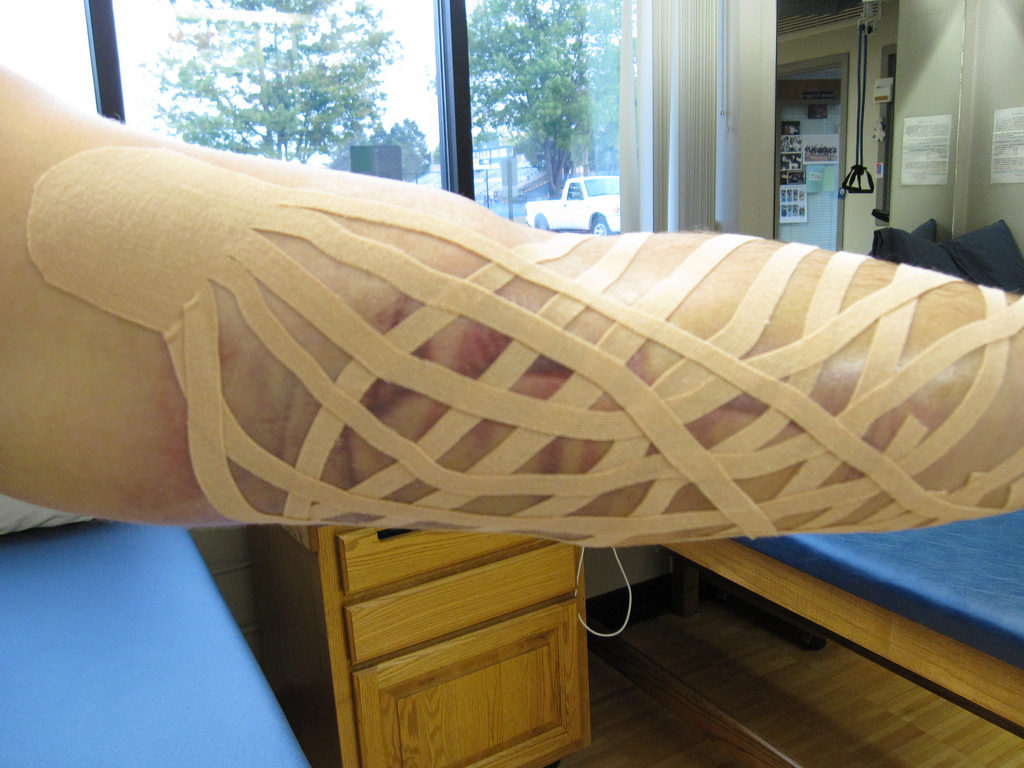
The use of any medicine will be effective only if it is used correctly. For taping, there are also a number of rules, compliance with which will ensure the maximum effect from the use of tapes.
In traumatism, the application of the kinesio tape is performed both on the injured area itself and on the adjacent areas, taking into account which muscles work normally and which ones require support. Particular attention should be paid to separating the tape from the packaging. Under normal conditions, it is recommended to use scissors to successfully separate the tape, however, when there are no instruments nearby, the kinesio tape can be torn off by hand.
Work with the kinesio plaster should be done, if possible, in compliance with all hygiene measures, the plaster should be glued with clean hands. To minimize sticking of the plaster on the hands, it is necessary to try to touch the adhesive area of the product as little as possible when working with it.
The kinesio taping procedure is performed in compliance with the following requirements:
- Taping should be done only by specialists, they can be a massage therapist, instructor, doctor or other medical worker;
- Taping is carried out only after a site previously prepared for the procedure, hair is removed on it, the skin is cleansed and treated, if necessary, with an antiseptic;
- The injured person is placed or seated in a comfortable position, taking into account that after the procedure the body posture should not change;
- The specialist applying the tape closely monitors the entire process, if a mistake was made during the taping, the tape is removed and the procedure is repeated.
- The adhesive is applied with both hands, one hand unwinds, applies and smooths the tape, the other hand holds the roll itself. The first strips of tape are glued above or below the damaged area;
- The following stripes of the plaster are glued in such a way that the new tape is applied to the previous one in two-thirds or half of its part;
- When taping, the specialist should monitor the condition of the tape, it should not form folds, it should fit snugly to the skin and be evenly stretched;
- When carrying out the procedure, it is necessary to mark the locations of the vessels and nerve endings, their squeezing is contraindicated;
- Avoid applying a new kinesio tape outside of competition, first you need to try a new tape during training. At the same time, one specialist should be engaged in applying the tape both in training and in competition.
It is forbidden to apply the plaster on the skin that is in improper condition, with hair, dirt, wounds, abrasions. Such places are preliminarily freed from the hairline and cleaned. The wounds are washed and treated with iodine or brilliant green, after which a bactericidal plaster is glued to them or they are wrapped in a sterile bandage.
Only after these procedures are carried out further kinesio taping is possible.
After the kinesio taping procedure, it is necessary to monitor the condition of the injured area, and if redness, inflammation, swelling or loss of sensitivity appears, the patch is immediately removed and the procedure is repeated.
When the use of kinesio tape is prohibited
You should not use kinesio tape when there are the following contraindications:
- in the presence of painful conditions for which a final diagnosis has not been made;
- with diabetes mellitus, without prior consultation with the attending physician;
- with tumors and other neoplasms, metastases and the risk of their occurrence;
- during body swelling and an increased risk of their occurrence;
- at elevated body temperature;
- with heart or renal failure;
- with thrombosis;
- during pregnancy (first trimester), with the use of kinesio tape in the abdomen;
- if you are allergic directly to the kinesio taping itself.
Bandage care and application
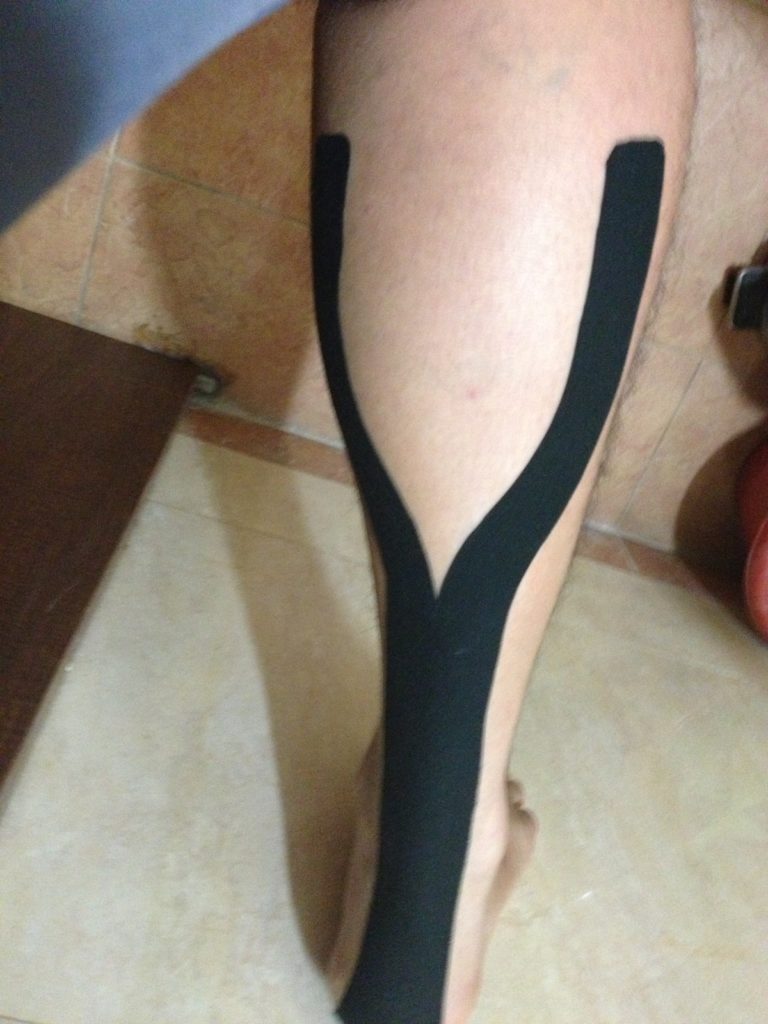
There are two large types of kinesio tapes:
- with glue pads;
- no adhesive.
In the area of the hands, 3- and 5-layer tapes are mainly used without an adhesive element. 6-8 layer tapes are applied to the thigh area, and 5 layers are applied to the shin areas.
To ensure increased strength of the dressings, it is possible to use a special medical glue applied to the skin.
With prolonged use of kinesio tape on the same area of the skin, weakening of individual muscles may occur. However, in general, after medical and rehabilitation procedures, taping generally gives a beneficial effect, improves the athlete's well-being and performance. The implementation of the taping procedure together with a therapeutic massage lasting 10-20 days is recommended by many specialists.
It should be noted that the use of bandages will be useless for people involved in power sports; when taping a person with increased sweating, it is imperative to use a tape with an adhesive element.
You also need to know that specially designed dressing schemes correspond to each part of the body.
An important issue when using kinesio tape is how to remove it painlessly after use or when replacing it. On the one hand, this procedure can be performed independently at home, on the other hand, so that the process is painless and does not damage the skin, a number of conditions must be met:
- before removing the tape, treat it with a special liquid or spray to remove it, the adhesive properties of the tape will be neutralized and the skin moisturized;
- after waiting 3-5 minutes, start removing the patch;
- to remove it, take the tape by the edge opposite to the direction of hair growth, and detach the tape from the skin in the opposite direction along hair growth with a slight angle;
- treat the skin area where the tape was located with a moisturizer.
Taping errors
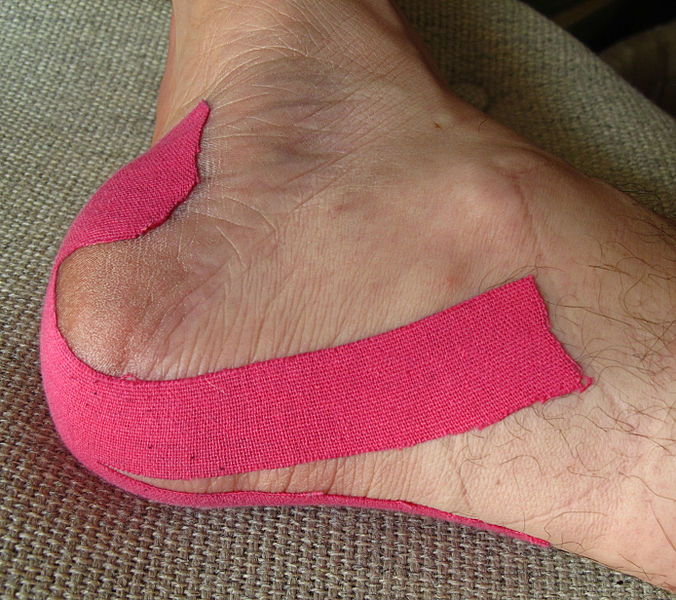
Like any effective remedy, kinesiotapes, if used incorrectly, can give the opposite health-improving result.
The most common mistakes when performing kinesio taping are:
- Overlapping tape is too tight. The result of tight bandage application is the danger of cyanosis, its symptoms are expressed in tingling and numbness of the taped areas;
- The uneven overlapping of different layers of tapes, one is tight, the other is weak, will lead to a weakening of the therapeutic and analgesic effect. To eliminate such an error, it is necessary to change the kinesio tape;
- The tension of the muscles of the taped face, further leads to the weakening of the pasted tape and its unusability;
- Errors in the imposition of tours, non-observance of the proportions of the imposition of one layer on another, will lead to the unreliability of the entire kinesio tape and reduce the therapeutic effect.
conclusions
Summing up, it should be noted that kinesio taping is a modern effective and relatively inexpensive tool that has many indications for use.
Simply answering the question "what are kinesiotapes for?"
The best kinesio tapes for 2020 in Russia
RockTape "Bulk H2O" (5cm x 32m)
South Korea is the industry leader today. Kinesio tapes from the Korean company RockTape have rightfully earned the image of a product of impeccable quality.

Advantages:
- made of cotton and nylon;
- suitable for water sports;
- does not contain latex and zinc;
- has a special wave-like structure;
- 180% elasticity;
- does not lose its properties up to 5 days of wear.
Disadvantages:
- high price.
Curetape Giant Roll (5cm x 31.5m)
The peculiarity of this tape is its size - it is one of the largest kinesio tapes on the market.
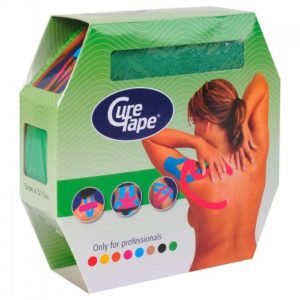
Advantages:
- big size;
- versatility in application, from sports to medicine;
- composition 100% cotton;
- flesh color;
- glue base - hypoallergenic acrylic glue.
Disadvantages:
- high price;
- lack of choice of colors;
- not resistant to water.
Patterned RockTape (5cm x 32m)
In this product, the manufacturer focuses on design. Tape not only heals, but also decorates the body of an athlete.
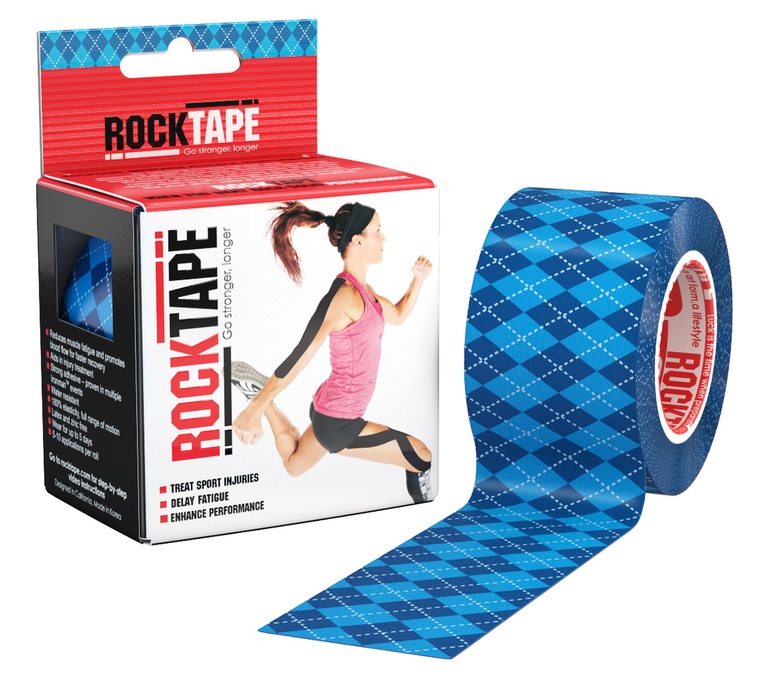
Advantages:
- Beautiful design;
- can be worn for up to 5 days without losing the properties of the tape;
- the choice of colors;
- 180-190% elasticity;
- water resistance.
Disadvantages:
- high price.
Temax Extra Sticry (5cm x 22m)
The South Korean medical company Temax appreciated the possibilities of taping. And now Temax enters the kinesio tape market with its exclusive product line.
Advantages:
- produced by medical professionals;
- wide range of colors;
- 160% elasticity.
Disadvantages:
- high price;
- contains synthetic spandex (4%);
- not resistant to prolonged exposure to water.
Cure tape punch
Cure Tape Punch is interesting primarily for its structure. The tape has holes along the entire length that enhance the stimulating effect on the taped area.
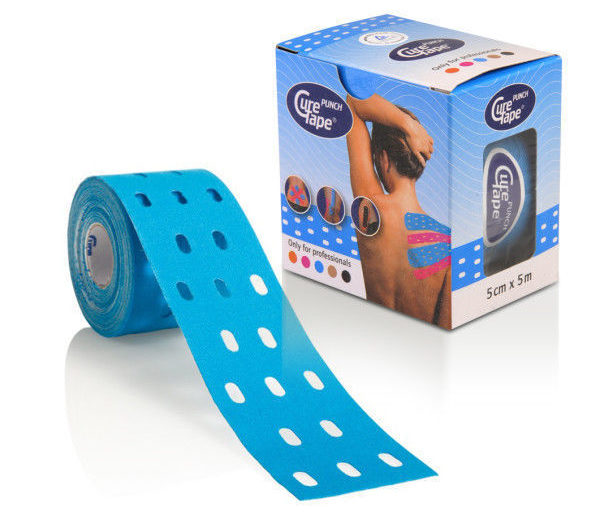
Advantages:
- increased stimulation in the taping area;
- suitable for stroke patients;
- increased elasticity;
- material 100% cotton;
- wide range of colors.
Disadvantages:
- high price.
Kinexib Pro (5cm x 1m)
This is a kinesio tape of Russian-Chinese production, today it can be found in almost any large sports store.
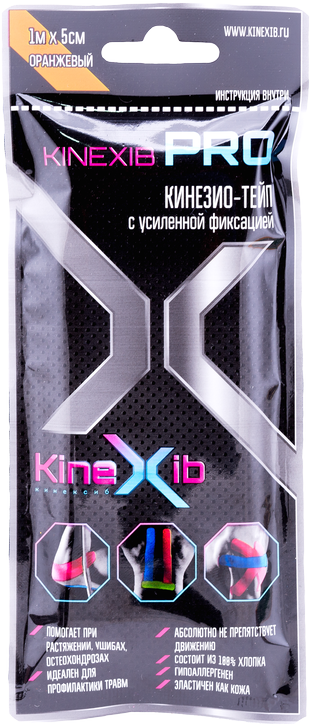
Advantages:
- low cost;
- availability;
- made from 100% cotton;
- wide range of colors.
Disadvantages:
- short term of wearing 3 days;
- the adhesive layer is not hypoallergenic;
- insufficient level of elasticity.
The correct choice and professional application of kinesiotape will make this therapy the most effective.












